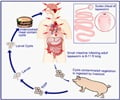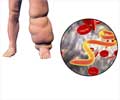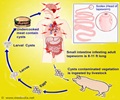Because planarian flatworms possess the extraordinary ability to regenerate lost tissue with the help of their stem cells (neoblasts), they are the subject of many research efforts.
Because planarian flatworms possess the extraordinary ability to regenerate lost tissue with the help of their stem cells (neoblasts), they are the subject of many research efforts. These worms can even grow an entirely new worm out of minute amputated body parts.
Now researchers from the Max Delbrück Center in Berlin, Germany together with researchers in the US and Canada present the first comprehensive catalogue of small RNAs of planaria, elements that regulate gene expression. They also have identified small RNAs which may play a role in regeneration and stem cell function, Nikolaus Rajewsky from the MDC points out (PNAS, Early Edition)*.Research suggests that the regeneration of the flatworm involves hundreds of genes. But how are these genes regulated? With the latest technologies researchers search for molecules which regulate genes, such as the small RNAs and especially microRNAs (miRNAs).
Of the hundreds of known planarian species the team of researchers from Germany, the US and Canada chose Schmidtea mediterranea. Full 30 percent of the cells of this species consists of stem cells, making it a unique model system to investigate the function of stem cells.
Many planaria genes resemble those of humans, and also many genes specifically linked to planarian stem cell biology and regeneration are conserved in humans. Understanding planarian regeneration therefore promises to yield important insights into human regeneration and stem cell biology, the researchers are convinced.
The researchers looked for small RNAs in stem cells as well as in the whole planarian organism. They discovered 60 new microRNA genes and could demonstrate that ten microRNAs are specifically linked to stem cell biology and may therefore play a role in regeneration. A few of these microRNAs also exist in humans.
Furthermore, the researchers discovered millions of piRNAs. This is a group of just recently discovered small RNA molecules which are important for the stability of the genome. The researchers could demonstrate that piRNAs are highly represented in the planarian stem cells and likely function in a similar way as in mammals.
RAS
 MEDINDIA
MEDINDIA




 Email
Email




